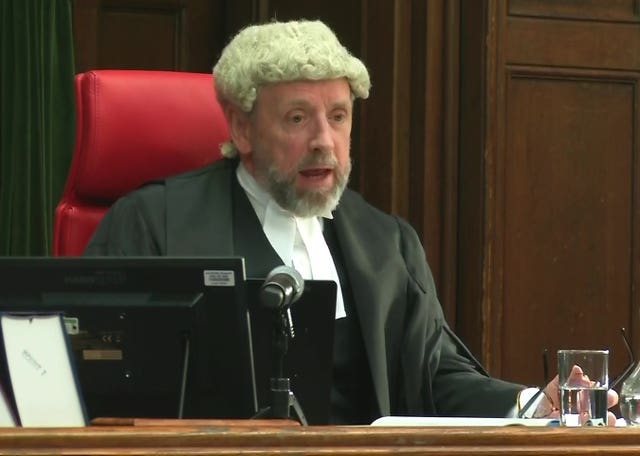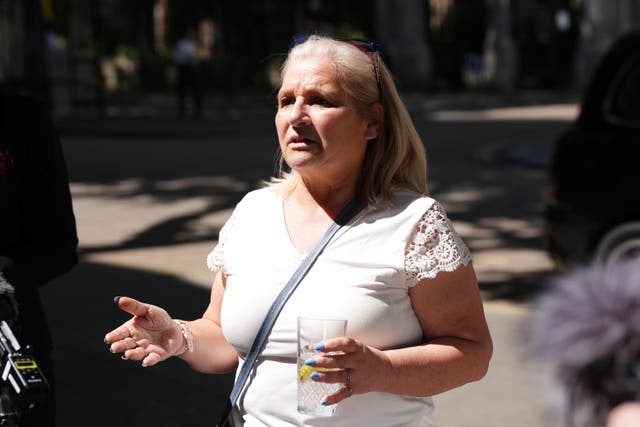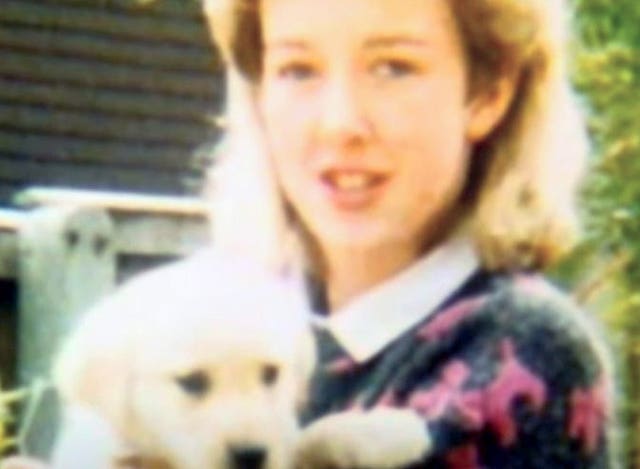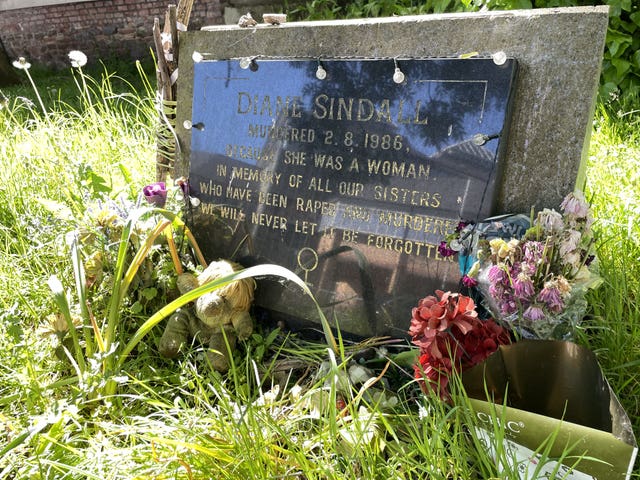Peter Sullivan ‘not angry’ as murder conviction quashed after 38 years in prison
Mr Sullivan was jailed in 1987 for the murder of 21-year-old Diane Sindall the previous year.

Peter Sullivan has said he is “not angry” and “not bitter” after the Court of Appeal quashed his murder conviction, making him the longest-serving victim of a miscarriage of justice in the UK.
The now-68-year-old, who was jailed in 1987 for the murder of Diane Sindall and has since spent 38 years in prison, described what happened to him as “very wrong” but said the ruling did not “detract or minimise” a “heinous and most terrible loss of life”.
Mr Sullivan was aged 30 when he was sentenced to life with a minimum term of 16 years after being found guilty of the 1986 murder of 21-year-old Ms Sindall in Bebington, Merseyside, but remained in prison for almost four decades.
On Tuesday, three senior judges quashed his conviction after his case was referred to the Court of Appeal by the Criminal Cases Review Commission, following new DNA evidence.
It follows two previous attempts to overturn the conviction, the first of which came in 2008.

In their ruling, Lord Justice Holroyde, sitting with Mr Justice Goss and Mr Justice Bryan, said the new evidence meant it was “impossible to regard the appellant’s conviction as safe”, while offering condolences to Ms Sindall’s loved ones.
In a statement read out by his solicitor following the judgment, Mr Sullivan said: “What happened to me was very wrong, but it does not detract or minimise that all of this happened off the back of a heinous and most terrible loss of life.”
He continued: “I’m not angry, I’m not bitter.”
Speaking to reporters outside the court in London, Mr Sullivan’s sister, Kim Smith, said: “We lost Peter for 39 years and at the end of the day it’s not just us, Peter hasn’t won and neither has the Sindall family. They’ve lost their daughter, they are not going to get her back.
“We’ve got Peter back, and now we’ve got to try and build a life around him again.

“We feel sorry for the Sindalls, and it’s such a shame this has had to happen in the first place.”
Mr Sullivan, who is now set to be released from prison, attended the hearing via video link from HMP Wakefield and wept and held his head in his hands as his conviction was quashed.
His family members, sitting in the public gallery of the court, were emotional as the decision was given, with his sister Kim Smith tearfully declaring: “We’ve done it.”
Ms Sindall had been returning home from work as a barmaid when she was beaten to death and sexually assaulted, with her body left partially clothed and mutilated.
During the hearing, lawyers for Mr Sullivan told the court that the new evidence showed that Ms Sindall’s killer “was not the defendant”.
Barristers for the Crown Prosecution Service (CPS) told the court that there was “no credible basis on which the appeal can be opposed” related to the DNA evidence, as it was “sufficient fundamentally to cast doubt on the safety of the conviction”.
Mr Sullivan first applied to the CCRC in 2008 over concerns related to DNA evidence, but it did not refer the sentence to the Court of Appeal at that time.
The CCRC said in November last year that experts at the time had advised that “any further testing would be very unlikely to produce a DNA profile”, with Lord Justice Holroyde stating on Tuesday that this decision was “plainly correct”.
Mr Sullivan then had an appeal bid, which did not involve the CCRC, dismissed by the Court of Appeal in 2019, after judges ruled that bite mark evidence used in the challenge was not central to the prosecution at trial.

He then applied to the CCRC again in 2021 to refer his case, raising concerns over police interviews, bite mark evidence used during his trial, and the murder weapon.
The CCRC said that, as well as new DNA evidence, there was “also evidence to suggest there were possible breaches of the Police and Criminal Evidence Act 1984” concerning the interviews, with Mr Sullivan not provided with an appropriate adult and initially denied legal representation.
Duncan Atkinson KC, for the CPS, told the Court of Appeal that the new DNA evidence, analysed by three forensic scientists, “could not have been available” at his trial or when the CCRC first considered the case.

Mr Atkinson continued that analysis of the DNA showed that it came from someone known as “unknown male one”, and that it was “one billion times more likely that the sample originated from unknown male one, rather than someone else, and it did not match the appellant”.
Giving the court’s ruling, Lord Justice Holroyde thanked the CCRC for “the care in which they have considered” the case.
He said: “Strong though the circumstantial evidence against the appellant seemed at trial, it is now necessary to take into account the new scientific evidence pointing to someone else, the unknown man, as the attacker.”
He said that DNA evidence alone was “sufficient to determine the outcome of this appeal”, while dismissing other grounds of challenge related to bite mark evidence and police interviews.
While handing down the judgment, he also said that an unknown man contacted the police after the murder to say he had stolen and burned Ms Sindall’s clothes, but he later retracted the account and was eliminated from police enquiries.
Merseyside Police confirmed that 260 men have been eliminated from their inquiry since it was reopened in 2023 and that none of Ms Sindall’s loved ones are implicated.
Detective Chief Superintendent Karen Jaundrill said the force was “committed to doing everything within our power to find whom the DNA, which was left at the scene, belongs to”, and called for anyone with information to come forward.
She said: “Unfortunately, there is no match for the DNA identified on the national DNA database.
“We have enlisted specialist skills and expertise from the National Crime Agency, and with their support, we are proactively trying to identify the person the DNA profile belongs to, and extensive and painstaking inquiries are underway.”
Nick Price, director of legal services at the CPS, said: “We recognise the enormous impact this conviction has had on Peter Sullivan’s life and the profound implications of the court’s decision in respect of this conviction.
“The prosecution case was brought on the basis of all the evidence available to us at the time.
“When new information or evidence is referred to the Court of Appeal by the Criminal Cases Review Commission (CCRC), our specialist lawyers carefully review the evidence in order to assist the Court of Appeal in its determination of the safety of the conviction.
“When the CCRC referred this case to the Court of Appeal, we took steps to review the new scientific analysis, which had not been available until recently, and have now concluded that we could not oppose Mr Sullivan’s appeal.
“The court has made clear that the scientific analysis of DNA evidence, which was not available at the time of Mr Sullivan’s original trial in 1987, means that his murder conviction is now unsafe.”
A CCRC spokesperson said that despite the DNA evidence not being available in 2008, the organisation did “regret that we were not able to identify Mr Sullivan’s conviction as a potential miscarriage of justice in our first review”.
They said: “During Mr Sullivan’s application to the CCRC in 2021, we decided to revisit DNA testing to see if a profile could now be established. The scientific techniques that we relied on in this review were not available at the time of our first review.
“Our purpose is to find, investigate and refer potential miscarriages of justice, and it is imperative that we continue to take opportunities offered by developments in scientific techniques to do that.
“As an organisation, we are committed to taking forward learning from previous reviews, and we continue to develop our understanding around forensic opportunities.”
Downing Street said the judgment must be carefully considered to get both Mr Sullivan and Ms Sindall’s family “the answers they deserve”.
A Number 10 spokesman said: “It’s clear that Peter Sullivan has suffered a grave miscarriage of justice and our thoughts are also with Diane Sindall’s family on what must be an incredibly difficult day.”





